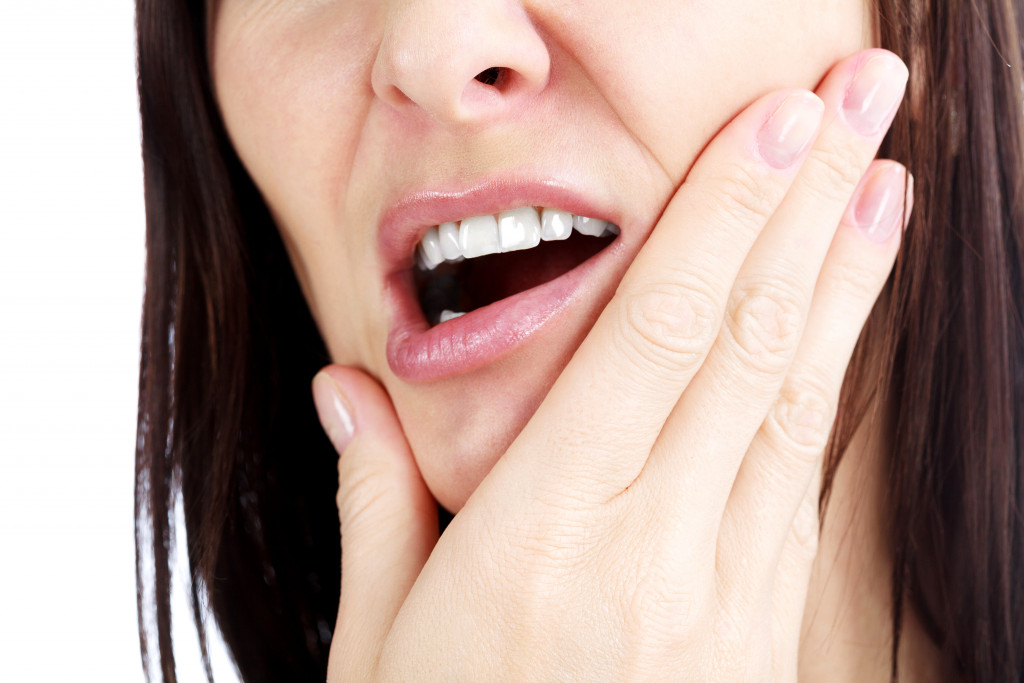- Gum recession affects an estimated 30-50% of adults in the U.S.
- Common causes of receding gums include brushing too hard or too often, aggressive flossing, tooth loss, and genetics.
- Symptoms of receding gums can include a visible, exposed root surface area on one or more teeth, sensitive teeth, tender gums, and bad breath.
- Treatments for receding gums can include scaling and root planing, gum graft surgery, and soft tissue laser therapy.
Have you noticed that your gums have been receding? If so, you’re not alone. Gum recession affects an estimated 30-50% of adults in the U.S. In this blog post, we’ll explore the causes, symptoms, and treatments for receding gums so that you can take steps to prevent further damage and maintain a healthy smile.
What Causes Receding Gums?
Knowing the causes of receding gums can help you understand why and what steps to take to ensure healthy gums. Here’s a look at four common causes.
Brushing too Hard or Too Often
Although brushing your teeth is important for good oral hygiene, brushing too hard or too often can damage your gums. Brushing with a hard-bristled toothbrush and applying excessive pressure will wear away gum tissue and cause the gums to recede. You should use a soft-bristled brush, brush gently, and only twice daily—once in the morning and once before bed—to prevent damage to your gum tissue.
Aggressive Flossing
Many people tend to be aggressive when they floss their teeth, which can cause trauma to the delicate gum tissue surrounding each tooth. When flossing, use gentle motions and curve the floss around each tooth rather than sawing back and forth between them. Additionally, if you notice any bleeding when flossing, contact your dentist, as this could indicate that you need professional treatment for gum disease or other periodontal issues.
Tooth Loss
When you lose a tooth, the supporting gum tissue can begin to recede. Although tooth loss is unavoidable in some cases, such as severe decay or injury, protecting your remaining natural teeth from further damage and maintaining a healthy smile is essential. Opting for tooth replacement options as early as possible, such as dental implants or bridges, can help to support the surrounding gums and teeth and prevent further tooth loss.
Genetics
Genetics is another factor that may contribute to receding gums as some people may be predisposed to weak connective tissue in their mouths due to hereditary factors such as family history or certain medical conditions like diabetes or HIV/AIDS, which weaken immune systems and make individuals more prone to infection or inflammation in the mouth area including receding gums.
Symptoms of Receding Gums
The most obvious symptom is when your gum line appears to move away from your teeth, and there is a visible, exposed root surface area on one or more teeth. Other potential signs are sensitive teeth, tender gums, and bad breath, even after maintaining regular brushing and flossing habits. If you are experiencing any of these symptoms, you must visit a dentist as soon as possible for a professional diagnosis.
Treatments for Receding Gums
If caught early enough, receding gums can be treated accordingly. In many cases, your dentist may recommend a procedure depending on the severity of your receding gums, such as:
Scaling and Root Planing (Deep Cleaning)
The first line of defense against receding gums is scaling and root planing, or deep cleaning. During this procedure, your dentist will use special tools to remove plaque and tartar from below the gum line and smooth out minor rough spots on the tooth root. This helps to reduce inflammation in the area and improve gum health. It may also help prevent further recession by reducing the number of bacteria in your mouth.
Gum Graft Surgery
Gum graft surgery may be necessary if deep cleaning isn’t enough to stop the recession. During this procedure, your dentist will take tissue from another part of your mouth—usually the roof—and use it to replace any missing tissue around the affected teeth. This helps restore the natural shape of your gums and reduce any pain caused by exposed roots.
Soft Tissue Laser Therapy

Soft tissue laser therapy is a relatively new treatment option that uses a low-powered laser to target areas affected by gum recession without cutting or suturing anything. The laser energy stimulates healing in the area and can even help regenerate tissue if needed. It’s a minimally invasive procedure that typically causes minimal patient discomfort and has fewer side effects than traditional surgical treatments.
Final Thoughts
Gum recession affects many people, but it doesn’t have to be permanent if treated correctly. Knowing what causes receding gums and how to recognize symptoms can help you identify any issues quickly and get the treatment you need to prevent further damage. If you’re experiencing any of the symptoms mentioned above, you must visit your dentist for a professional diagnosis and personalized treatment plan. With their expertise and your dedication to good oral hygiene practices, you can protect your gums, maintain a healthy smile, and keep gum recession at bay.





